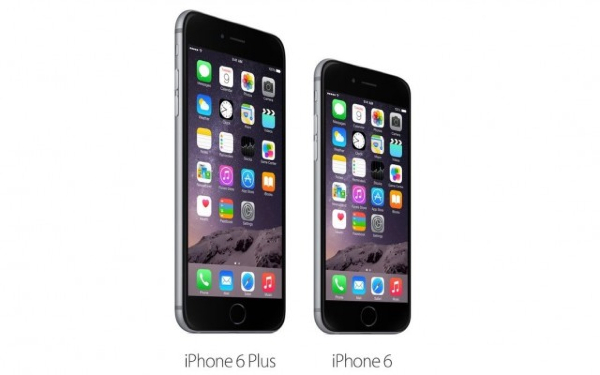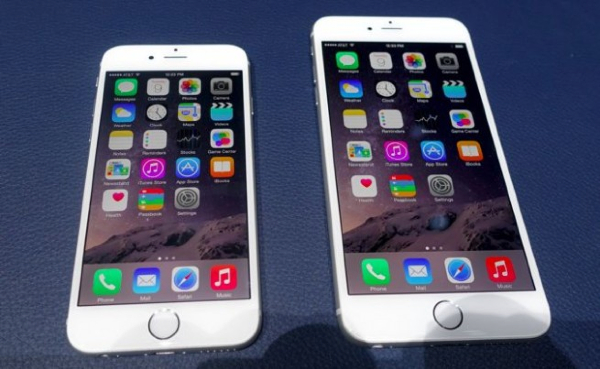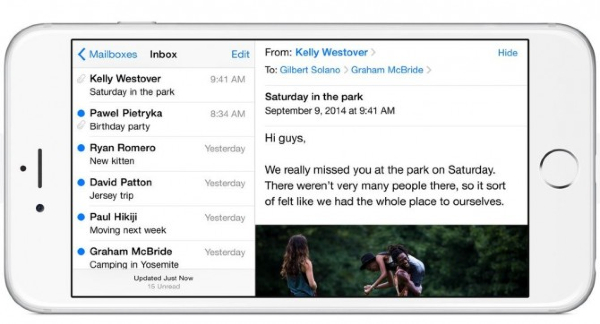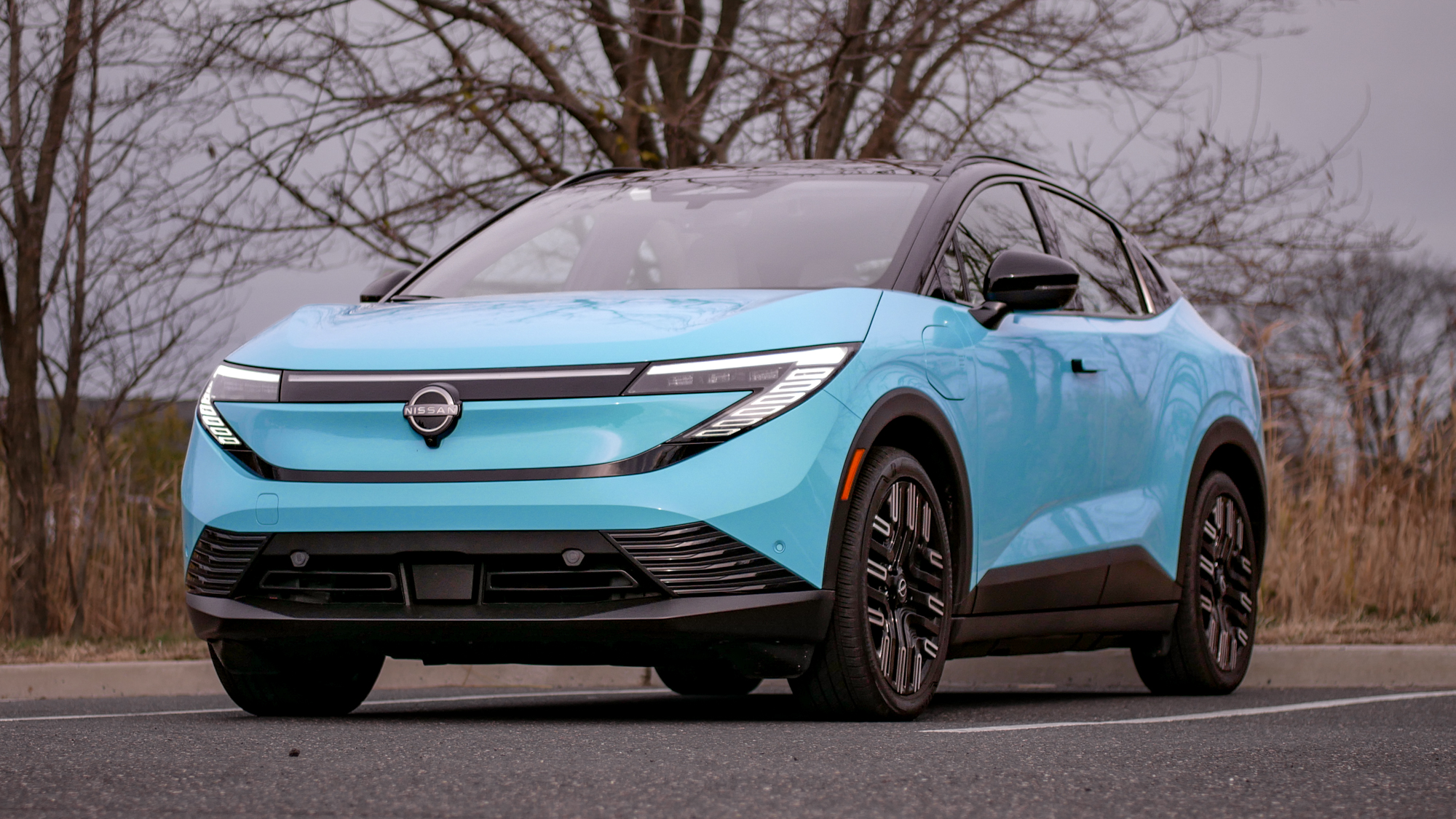iPhone 6 vs. iPhone 6 Plus: Which Is Right For You?
The iPhone 6 Plus costs $100 more than the iPhone 6, but what are the differences and are they worth the premium? Here's a comparison.

Bigger or biggest? That's just one of the questions facing shoppers as they decide between the 4.7-inch iPhone 6 and 5.5-inch iPhone 6 Plus. Both smartphones have larger displays, 802.11ac wireless, NFC for mobile payments and faster A8 processors, but there are more than a few differences between the two devices. Here's a quick breakdown of each phone, and what that means for you.
iPhone 6iPhone 6 PlusStarting PriceStarting at $199Starting at $299CPU/GPU64-bit Apple A8 processor/M8 motion co-processor64-bit Apple A8 processor/M8 motion co-processorOSiOS 8iOS 8Screen Size4.7 inches5.5 inchesResolution1334 x 750 pixels, Retina HD1920 x 1080 pixels, Retina HDRAMN/AN/AInternal Storageup to 128GBup to 128GBExpandable StoragenonenoneFront Camera1.2 MP1.2 MPRear Camera8 MP iSight8 MP iSight with OISBattery Lifeestimated 10 hours 4G LTE browsingestimated 12 hours 4G LTE browsingConnectivity802.11ac802.11acSize5.4 x 2.6 x 0.27 inches6.2 x 3.1 x 0.28Weight4.6 ounces6.1 ouncesBattery Life10 hours on LTE12 hours on LTE
Design
Both the iPhone 6 and the iPhone 6 Plus have a new rounded edge design that separates them stylistically from the boxier iPhone 5s. They're also larger: The iPhone 6 has a 4.7-inch display, and the iPhone 6 Plus has a 5.5-inch display, bringing it into the realm of phablets such as the 5.7-inch Samsung Galaxy Note 4.
At 5.44 x 2.64 x 0.27 inches, the iPhone 6 is a hair thinner than the iPhone 6 Plus, which measures 6.22 x 3.06 x 0.28 inches. And, the iPhone 6 Plus is also 1.5 ounces heavier than the smaller version -- 6.07 ounces versus 4.55 ounces. So, those looking for a device that's more one-hand friendly might prefer the smaller iPhone 6. Regardless of size, both handsets will come in gold, silver and gray.
Display

The smaller iPhone 6 will have a 4.7-inch display with a resolution of 1334 x 750 pixels. By comparison, the iPhone 6 Plus will have a 5.5-inch display with a sharper 1920 x 1080-pixel display. That translates into respective pixels per inch of 326 for the iPhone 6 (the same as the iPhone 5s) and 401 ppi for the iPhone 6 Plus. However, the iPhone 6 will have a slightly better contrast ratio of 4000:1, as opposed to 3000:1 on the iPhone 6 Plus.
Camera

Both versions of the iPhone 6 will have an 8-MP rear camera with an f/2.2 lens capable of taking 1080p video at 60 fps and 240 fps in slo-mo mode. Additionally, a new sensor with Focus Pixels, which uses phase detection for autofocus, will let you capture fast-moving subjects more quickly.
The major difference between the two devices is that the iPhone 6 Plus has optical image stabilization, which means that you should be able to take steadier still and videos, as well as better images in low-light conditions. The regular iPhone 6 uses digital image stabilization.
Get instant access to breaking news, the hottest reviews, great deals and helpful tips.
Apps

Befitting its size, Apple also tweaked the iPhone 6 Plus' interface to allow apps to show additional information in landscape mode. For example, in the messaging app, the left side will show contacts, while the right side will show individual threads. Third-party support is also available, so for example, on CNN's app, a news feed will be on the left, while the article is on the right. The iPhone 6 lacks this versatility.
Battery Life
Courtesy of a larger battery, the iPhone 6 Plus should last longer on a charge than the iPhone 6, but just how big of a delta depends on the use case. When web surfing over LTE, Apple estimates the 6 Plus will last up to 12 hours, versus 10 hours on the iPhone 6. When playing video, the iPhone 6 Plus will last 4 hours longer than the iPhone 6. We can't wait to run the Laptop Mag Battery Test to see for ourselves.
Pricing

Not surprisingly, the iPhone 6 Plus will cost more than the iPhone 6. The smaller iPhone 6 starts at $199 for the 16GB model, whereas the 16GB version of the iPhone 6 Plus costs $299. Each bump in storage (64GB and 128GB) will cost an additional $100. As before, there's no expandable storage, but unlike with the iPhone 5s, Apple isn't offering a version with 32GB.
Bottom Line
That's a quick look at the features of the iPhone 6 and the iPhone 6 Plus. While the latter costs $100 more, it also offers a larger, higher-resolution display, optical image stabilization and longer battery life. That may be worth it for those who don't mind carrying around a larger phone.
Follow Michael A. Prospero @mikeprospero and on Google+. Follow us @TomsGuide, on Facebook and on Google+.

Michael A. Prospero is the U.S. Editor-in-Chief for Tom’s Guide. He oversees all evergreen content and oversees the Homes, Smart Home, and Fitness/Wearables categories for the site. In his spare time, he also tests out the latest drones, electric scooters, and smart home gadgets, such as video doorbells. Before his tenure at Tom's Guide, he was the Reviews Editor for Laptop Magazine, a reporter at Fast Company, the Times of Trenton, and, many eons back, an intern at George magazine. He received his undergraduate degree from Boston College, where he worked on the campus newspaper The Heights, and then attended the Columbia University school of Journalism. When he’s not testing out the latest running watch, electric scooter, or skiing or training for a marathon, he’s probably using the latest sous vide machine, smoker, or pizza oven, to the delight — or chagrin — of his family.
